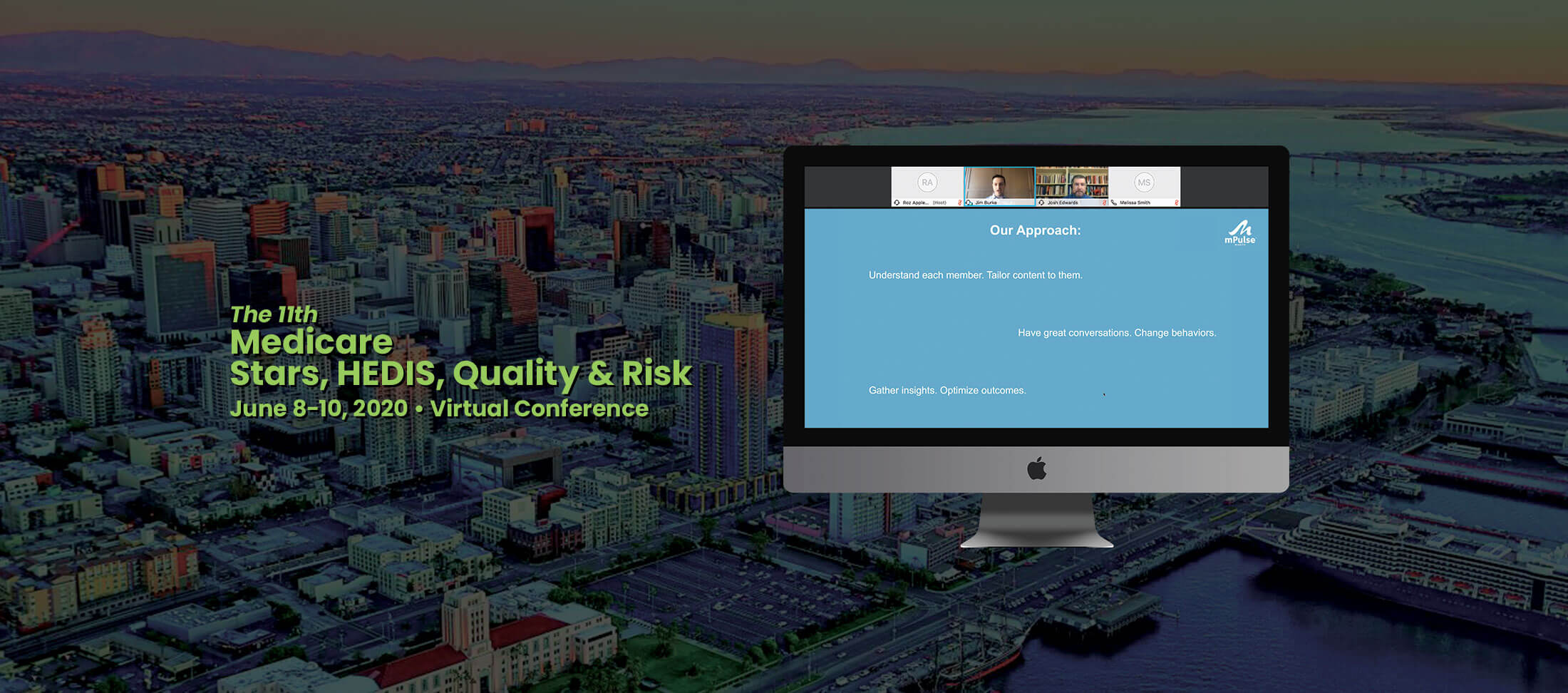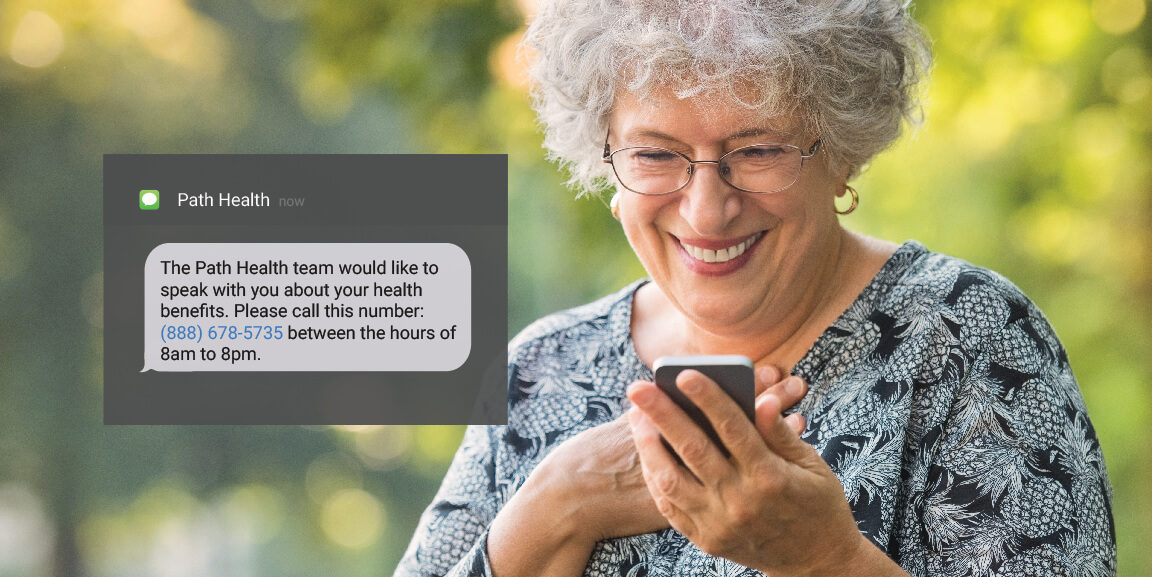The Strategic Solution Network hosted mPulse Mobile and Martin’s Point Healthcare to discuss Improving Member Communication on Tuesday June 9, 2020 as part of the 11th Medicare Stars, HEDIS, Quality and Risk virtual event. Josh Edwards, Stars Program Manager at Martin’s Point Healthcare, discussed best practices, while mPulse’s Solution Marketing Manager Jim Burke covered how data can change the conversation with the senior population and transform member engagement. Here are our biggest learnings from the event:
1. Meet Seniors Where They Are
Jim talked about how 90% of seniors who have phones (which is also around 90%) text regularly, while only 22% of that same audience are looking for new apps. App adoption and use among seniors is also declining slightly, according to the AARP. Member communication is difficult, so plans should not make it harder by asking members to engage in channels that they don’t normally use. mPulse has found mobile channels, especially conversational SMS, to be the best way to reach the Medicare population at scale. These members, when compared to other groups that mPulse engages, truly embrace the channel: they tend to prefer longer multi-turn conversations, view follow-up reminders as caring rather than annoying, and use emojis at a higher rate than any other age group.
2. Let the Data Drive
Getting a clear view of your population through data was a major theme for both presentations. Leveraging data from outreach itself gives you the tools to drive behavioral actionable outcomes. Jim noted that when outreach is conversational, the information flows two ways: the member is connected to resources and services, and the plan gains insights on member experience and barriers stopping members from taking key actions. Those insights can be difficult to gather without automated conversations and are some of the most actionable available to quality improvement teams.
3. Reimagine the Communication Cycle
Josh talked about the way rethinking the communication cycle can ease processes and improve engagement in the long term. He referenced his favorite process from what he calls “the Pink Book” or Making Healthcare Communication Programs Work from the National Cancer Institute (https://www.cancer.gov/publications/health-communication/pink-book.pdf ) as a great tool that has helped him and his team. Putting a process in place, whether from “the pink book” or elsewhere, keeps quality teams thinking strategically about member communication.
It is equally important to make sure vendors are on the same page with any communication strategy. The last thing your organization wants to do is muddle the message you are trying to send members because your vendors have a different idea of what the message is or was in the first place. Josh emphasized the need to coordinate across partners and include them in the big picture of your communication process.
4. SDOH and Your Audience
Both Jim and Josh emphasized the importance of putting your members in context. Who are you trying to reach and what type of barriers do they face to complete a key screening or refill a prescription? Uncovering barriers and tailoring content to fit your members’ challenges should be a core part of any quality improvement and member engagement strategy. SDOH effects all aspects of healthcare, including member communication. Jim showed how mPulse is using SDOH Indexing before starting outreach to identify likely impact of SDOH factors on engagement. This helps adapt strategies to fit the population and anticipate engagement challenges earlier.
5. Language Matters
It may seem like a basic reminder, but many plans still struggle to meet member preferences around language. The very first question from the audience was about serving populations that need outreach in more than just English. Josh from Martin’s Point said the ability for outreach vendors to switch between languages is key. Jim agreed that any automated system must be able to capture the preferred language both prior to sending out any communication and as members identify a preference during outreach. He also noted that content should be created within the native language when possible, as opposed to a direct translation from English.




